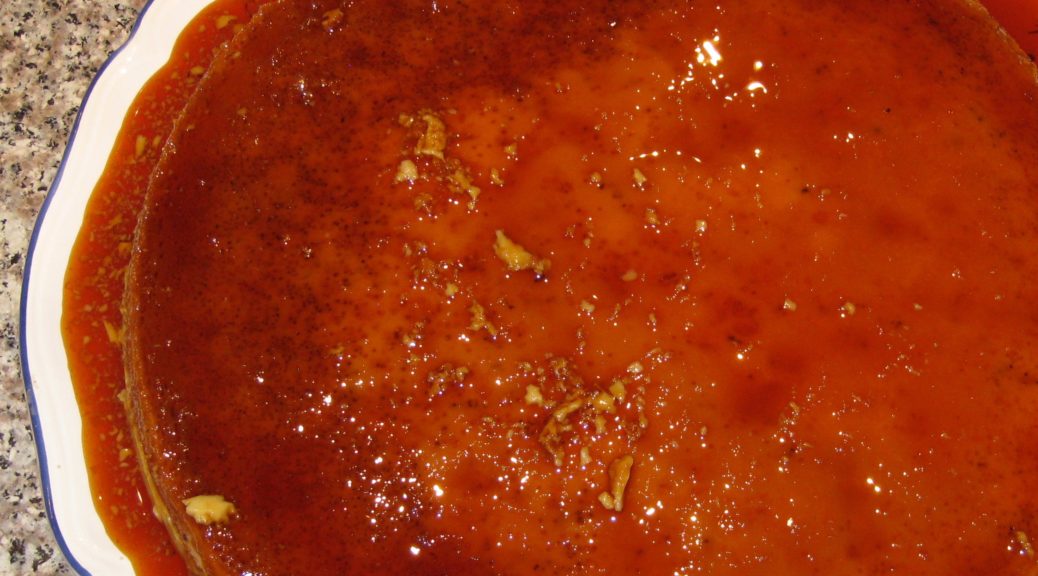October 11, 2017
Bertha Kravicas left Lithuania in 1927 with her family. They were hoping to get to America but when the quota was full they went to the closest place they could.
They thought their sojourn in Cuba would be brief but as the months turned into years, Bertha made a trip back to the Old Country where she met Victor Ashman in Latvia.
They married and returned to live in Cuba in 1931. Over the years, they became Cubans in the way that immigrants to the United States become Americans no matter their background.
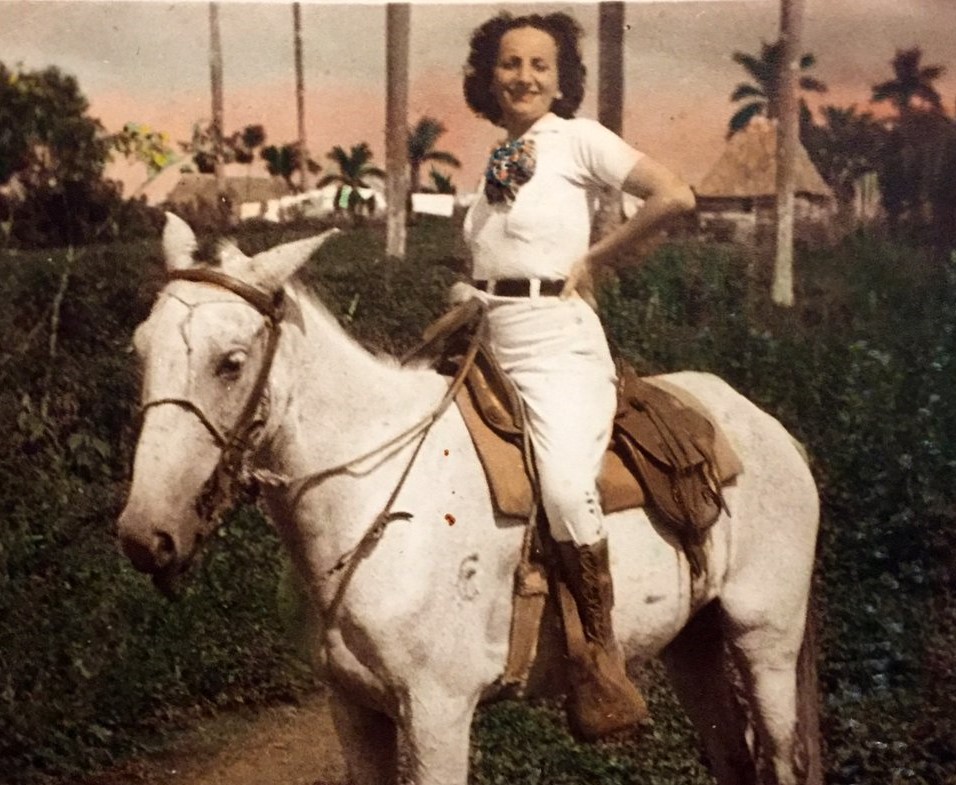
Victor even decided to run for public office. Because his name was not Cuban enough he officially changed it to Victor A. Larriga, in honor of his birthplace, Riga, Latvia.
One of the ways that Bertha adapted to her new country was through cooking.
Flan is made throughout the Spanish-speaking world but is especially popular in Cuba where it is the most common dessert. Flan is a source of family pride with each family believing that its flan is the best. (This sounds very familiar to me coming from a Southern Italian background where the same belief attaches to tomato sauce).
Flan recipes are passed down from generation to generation and fall into two general categories, those that contain canned milk and those that do not. Cubans smile approvingly when hearing that flan contains canned milk. After all, that’s how it should be!
Bertha’s flan is made entirely from canned milk; two kinds actually. That, and the generous amount of egg, makes a substantial flan.
After the Cuban Revolution Bertha and Victor took advantage of President Eisenhower’s offer for Cubans to immigrate to the United States. They arrived in late 1960 along with their son, Stuart.
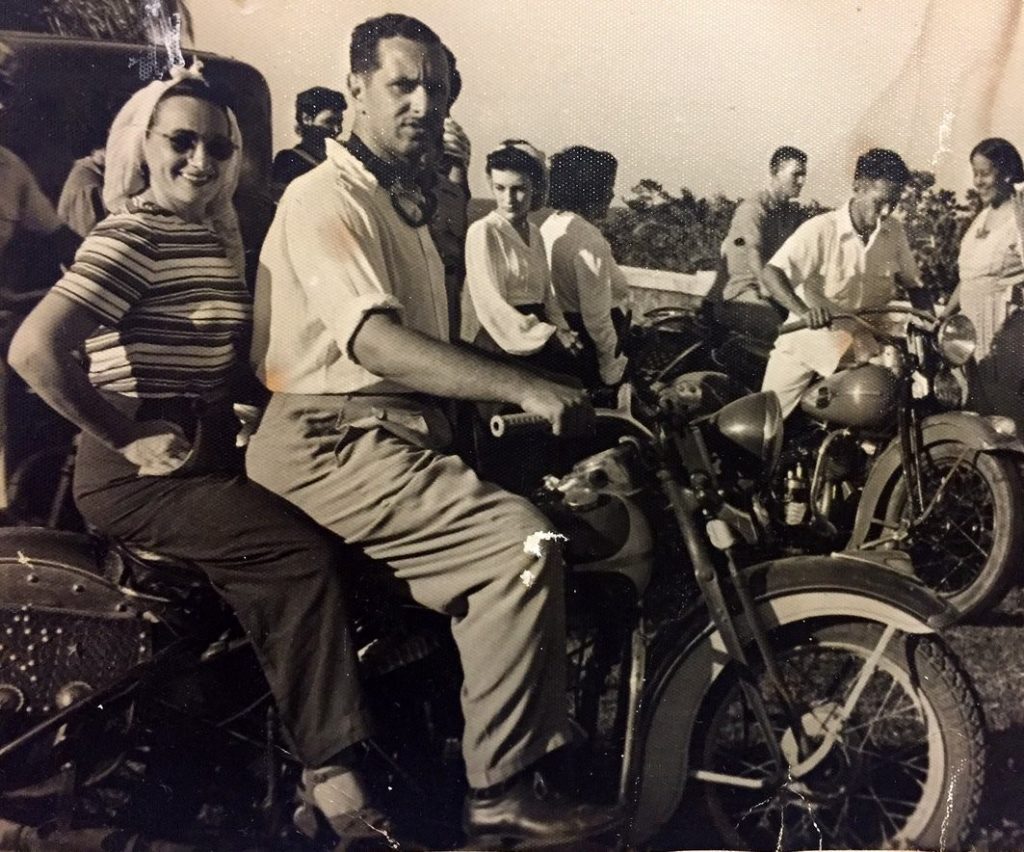
Stuart is now the Executive Director of the Center for Contemporary Arts in Santa Fe. It was at a CCA event earlier this summer that I tasted this remarkable flan made by Stuart’s wife Peggy Gaustad. Peggy is now the flan maker in the family, having taken over from Stuart. For the CCA event, Peggy made flan for 100 people but she recalls once making it for 150!
Stuart remembers that as a child, when his mother would make flan, he would be given the empty can of condensed milk and a chopped up banana to sop up the last bit of sweetness!
This recipe is actually double Bertha’s original. It’s the way Peggy makes it because there never seems to be enough from the original.
Follow us
Click HERE to join our mailing list and you’ll never miss a recipe again!
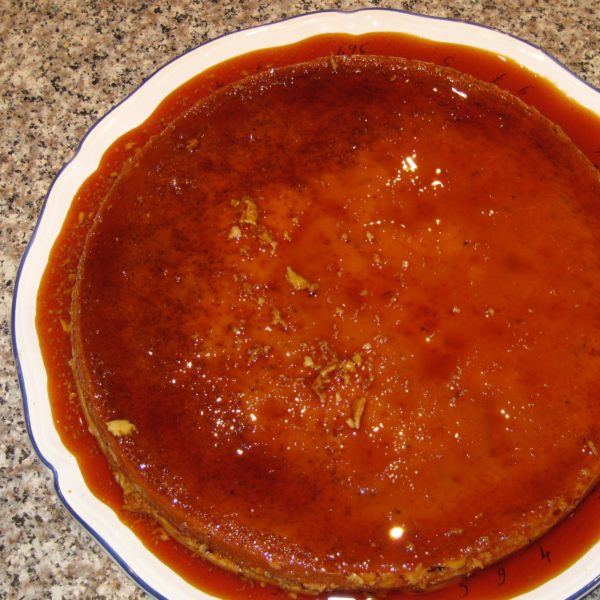
| Prep Time | 10 minutes |
| Cook Time | 1 1/2 hours |
| Passive Time | 30 minutes |
| Servings |
people
|
- 2 cans sweetened condensed milk 14 ounces each
- 2 cans evaporated milk 12 ounces each
- 6 very fresh eggs lightly beaten
- 2 teaspoons vanilla extract
- 1/2 teaspoon salt
- 1 cup white sugar
Ingredients
|

|
- For the flan, choose a 12-inch diameter pan with straight sides that can be heated on the stove and put in the oven.
- Put enough water into a pan large enough to hold the pan with the flan so that the water comes one-inch up the sides of the pan with the flan.
- Put the sugar into the pan selected for the flan.
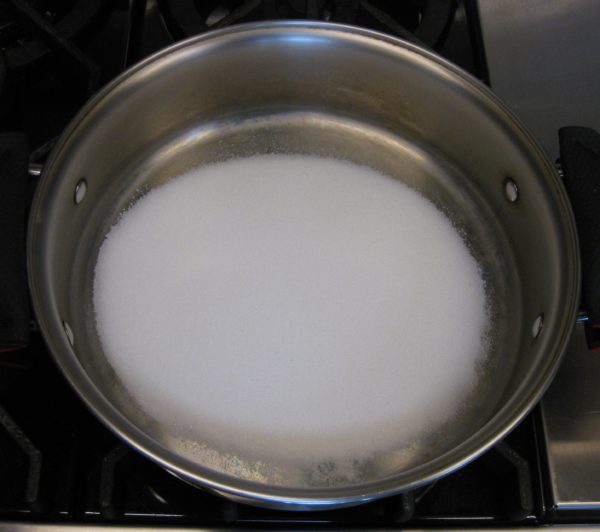
- Heat the pan with the sugar on medium heat until the sugar melts and turns dark brown. (A series of pictures follows showing the progression of the caramelization.)
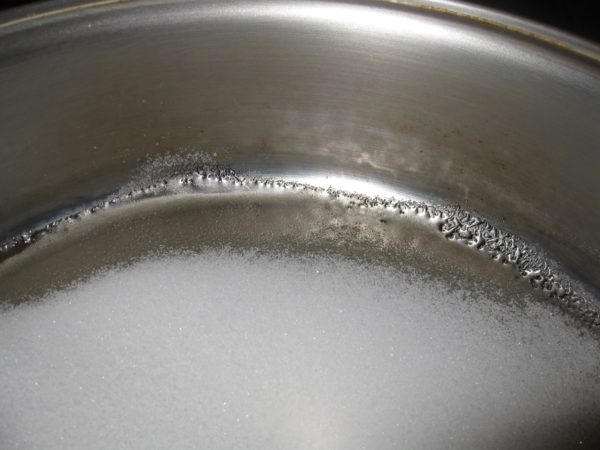
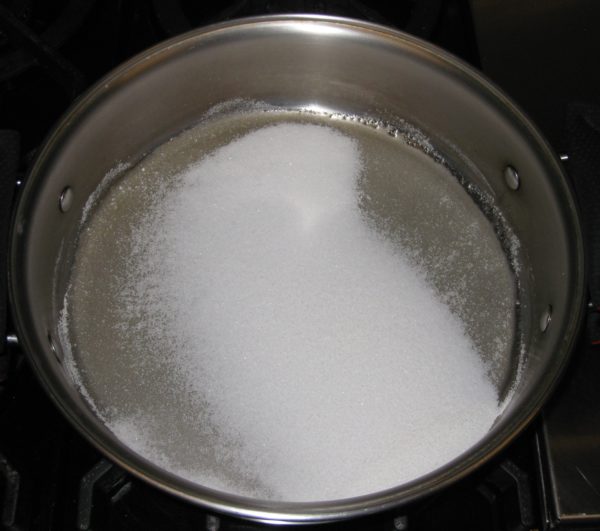
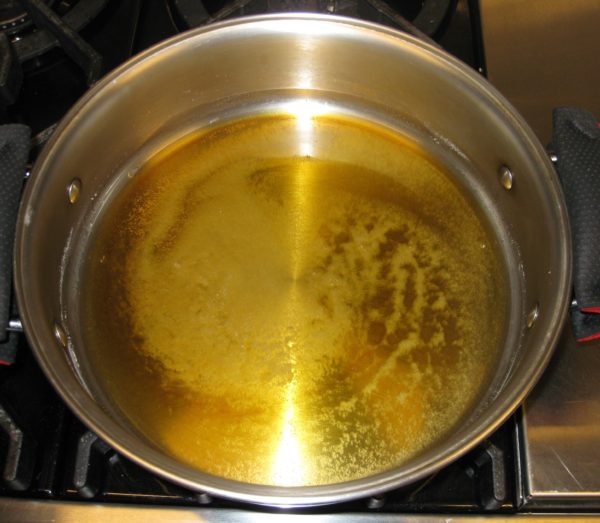
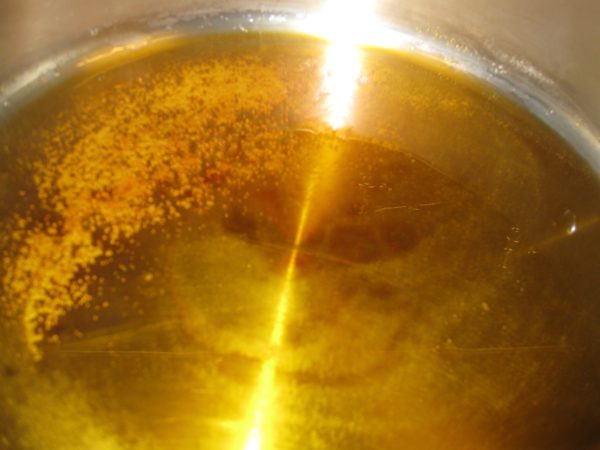
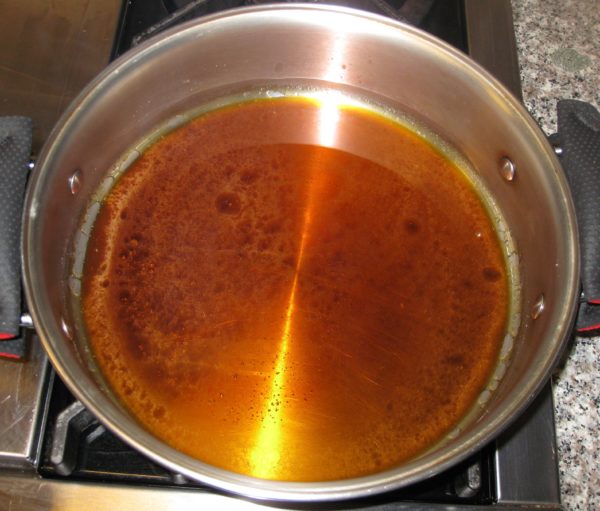
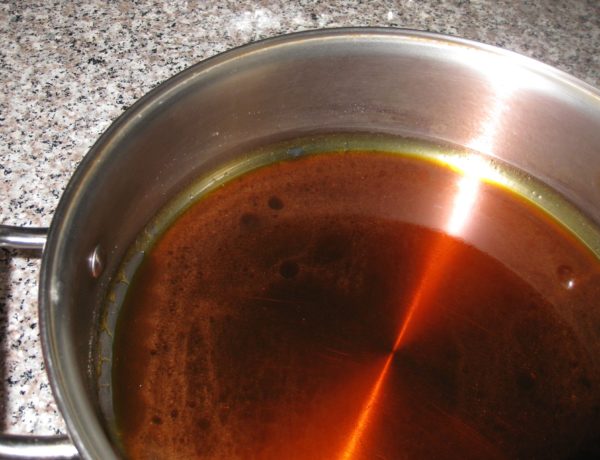
- Do not stir the sugar or caramel. Simply swirl the pan from time to time to mix the caramel. Rotate the pan on the heat occasionally to reduce hot-spots.
- If the pan has a very heavy bottom, the retained heat will continue to brown the sugar off the heat. Stop caramelizing the sugar a little before you think it’s done otherwise it might burn. If it turns out that the caramel is not quite dark enough, you can heat the pan again briefly.
- Remove the pan from the heat and allow it to cool during which time the caramelized sugar will harden on the bottom.
- While the caramel is cooling, bring the water in the water bath to a simmer on the stovetop then put the pan into a 350°F oven.
- Meanwhile, combine the condensed milk, evaporated milk, eggs, vanilla extract, and salt. Mix well.
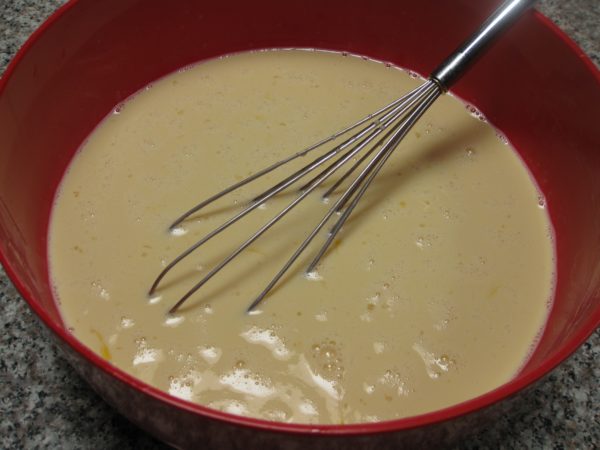
- When the caramel is hardened, pour the milk-egg mixture on top.
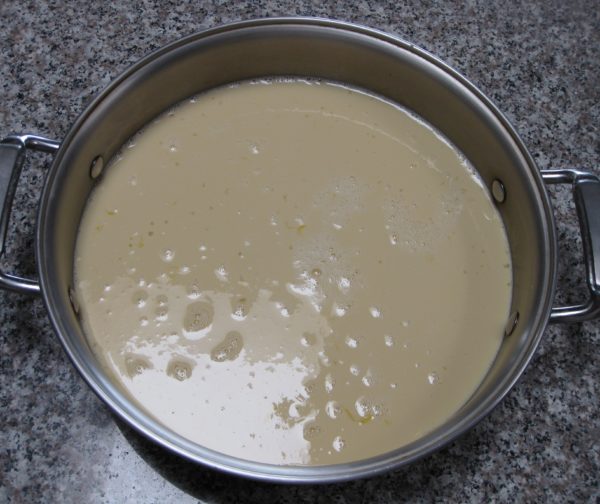
- Cover the pan tightly, either with foil or with a lid.
- Put the pan into the water bath in the 350°F oven.
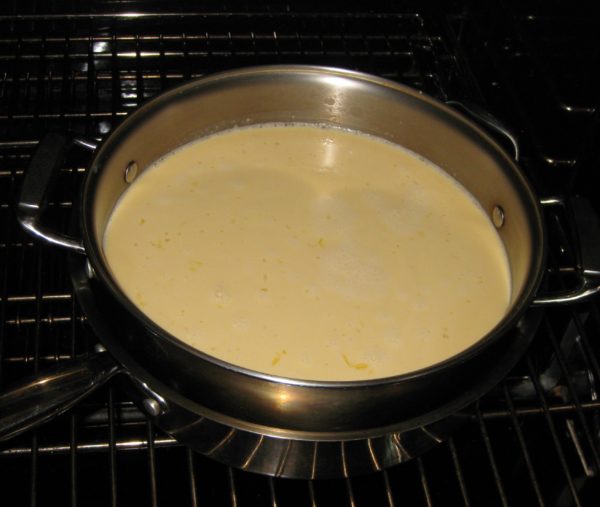
- Bake for 1 hour 15 minutes at 350°F.
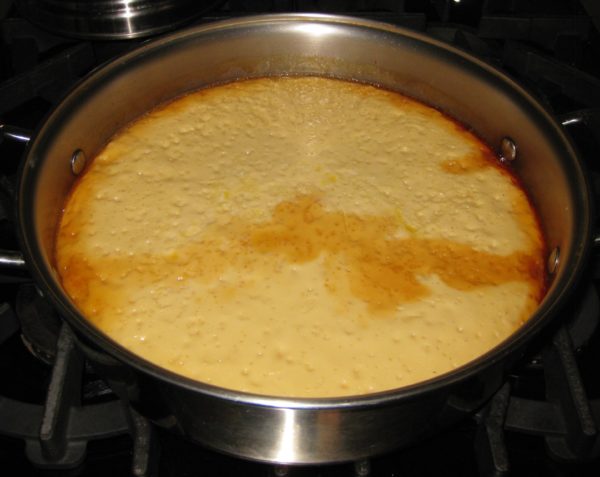
- A knife inserted in the center of the flan should come out clean. If not, cook a few minutes longer.
- Remove the flan from the oven and cool to room temperature.
- Refrigerate at least 8 hours. Overnight is best.
- When ready to serve, run a knife around the edge of the flan.
- Put a large platter upside down on top of the pan with the flan. Quickly flip the entire set-up over. The flan should come out of the pan in one piece. Pour any remaining caramel syrup onto the flan.
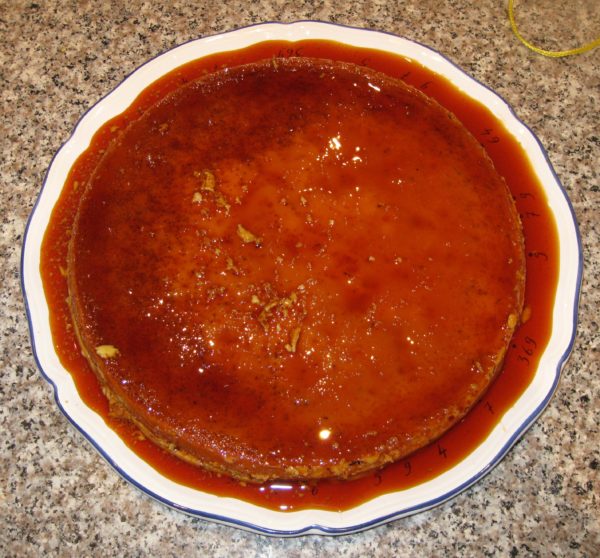
- Serve very cold.
Copyright © 2017 by VillaSentieri.com. All rights reserved.

